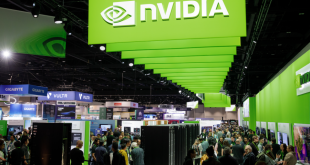We have changed our method of measuring noise levels. We have built a system inside a Lian Li chassis with no case fans and have used a fanless cooler on our CPU. We are using a heatpipe based passive power supply and an Intel SSD to keep noise levels to a minimum. The motherboard is also passively cooled. This gives us a build with completely passive cooling and it means we can measure noise of just the graphics card inside the system when we run looped 3dMark tests. Ambient noise in the room is around 20-25dBa. We measure from a distance of around 1 meter from the closed chassis and 4 foot from the ground to mirror a real world situation.
Why do this? Well this means we can eliminate secondary noise pollution in the test room and concentrate on only the video card. It also brings us slightly closer to industry standards, such as DIN 45635.
KitGuru noise guide
10dBA – Normal Breathing/Rustling Leaves
20-25dBA – Whisper
30dBA – High Quality Computer fan
40dBA – A Bubbling Brook, or a Refridgerator
50dBA – Normal Conversation
60dBA – Laughter
70dBA – Vacuum Cleaner or Hairdryer
80dBA – City Traffic or a Garbage Disposal
90dBA – Motorcycle or Lawnmower
100dBA – MP3 player at maximum output
110dBA – Orchestra
120dBA – Front row rock concert/Jet Engine
130dBA – Threshold of Pain
140dBA – Military Jet takeoff/Gunshot (close range)
160dBA – Instant Perforation of eardrum
Having three of these cards in such close proximity means you will need a case with a high level of airflow, and preferably a large side case fan directly beside the motherboard. Under load, the three cards generate a high level of noise, making it rather unpleasant unless you wear headphones.
 KitGuru KitGuru.net – Tech News | Hardware News | Hardware Reviews | IOS | Mobile | Gaming | Graphics Cards
KitGuru KitGuru.net – Tech News | Hardware News | Hardware Reviews | IOS | Mobile | Gaming | Graphics Cards




£1,500 just for the graphics cards, lol. Any chance you could offer that system up for a competition? 🙂
Thank you so much for the comprehensive comparison with other cards. You may choose a body part for me to kiss. I love having a lot of references in reviews.
lol, who is this article for, the rich and famous? one card is too much for most people I would imagine
Good article, shows that two is the best performance option really, unless you are chasing synthetic figures like in 3dmark11. thanks.
hard core ! wow
I really would have liked to have seen this trifire setup vs 6970 Trifire and 6990+6970 Trifire since that’s what many of us enthusiasts are rocking and we need to know how much needs to be spent to beat this performance.
I would have loved to have had time to test all that too, but unfortunately not this time.
Good review, I would wait for the custom asus card too, probably be £50 more, but if you are spending £500 its not a big deal. Asus made some great modded GTX580’s. they will do the s ame with the 7970, might be march though.
Great review. I always like reviews from KitGuru, particularly written by Zardon, many aspects and comparisons reviewed in detail.
If possible, please review the Asus HD 7970 DirectCU II (as single card), focus for game resolution 1200p or 1080p, please consider also Civilization V (with latest Catalyst, WHQL and Beta version), also compare performance of DirectCU II vs Accelero Xtreme 7970 (if it can be used on the Asus HD 7970 DirectCU II).
Not nit picking but the XFX DD uses a custom dual fan cooler slapped on a reference PCB, not a custom PCB as you said in the opening of your conclusion. Not saying a custom PCB would be better as some companies make their custom PCBs using cheaper materials (such as Power Color) than in the reference model to cut costs, but readers and potential buyers need to get the full picture.
Absolutely correct. My bad.